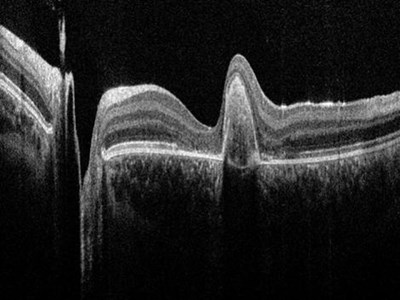Leica Microsystems Makes OCT Move with Bioptigen Acquisition
Highly rated North Carolina company Bioptigen has developed tools for ophthalmology and new life sciences applications.
Microscopy giant Leica Microsystems has made a strategic move into optical coherence tomography (OCT), with a deal to acquire US-based Bioptigen for an undisclosed sum.
The highly-rated North Carolina firm, co-founded by OCT pioneer Joseph Izatt and Eric Buckland back in 2004, has developed spectral-domain (SD) OCT equipment for ophthalmology applications and contact lens metrology. Izatt and colleagues are credited with generating the first OCT image of the eye's anterior structure back in 1994.
Leica says that it plans to assist ophthalmologists performing eye surgery by integrating OCT imaging into its existing suite of surgical microscopes.
Heinrich Dreyer, VP of the firm’s medical division, said: “Adding Bioptigen’s OCT capabilities to our surgical microscopes directly addresses our customers’ requirement for better decision-making tools. Bioptigen brings great products and expertise, and will be an important contributor to our growth in the ophthalmology market.”
Buckland, Bioptigen’s CEO, added that joining forces with Leica would help allow its SD-OCT technology to address a wider range of both research and clinical applications, and see the non-invasive interferometry technique used more extensively in the operating room.
Last year, the analyst company Lux Research identified Bioptigen as one of the leading protagonists in the field of OCT, rating the firm as “dominant” among its peers in terms of technology, business strategy and maturity.
Surgical integration
According to US Securities & Exchange Commission (SEC) filings, Bioptigen raised $1.5 million in equity in February 2011, while earlier this year it was awarded $458,000 by the North Carolina Biotechnology Center to further develop its “EnFocus” system for three-dimensional imaging during surgical procedures.
In addition, the US National Eye Institute last year allocated grants of $1.7 million to the company to integrate OCT directly into the optical train of a surgical microscope. “The work advanced under these grants will bring surgeons one step closer to realizing the full value of intraoperative OCT,” said Buckland at the time.
“Ultimately, the ability to observe sub-surface structures simultaneous with surgical manipulations will provide surgeons with a critical advance in microscopic visualization, with the goal of improving patient outcomes and reducing surgical risk,” the CEO added.
While all OCT techniques use interferometry to create cross-sectional views of different types of tissue, the SD-OCT approach offers faster scanning speeds than the earlier time-domain approach, making it more suited to real-time surgical use.
Another advantage is improved axial resolution, while even newer swept-source (SS) OCT systems, which are based around a tunable laser, promise to greatly extend OCT imaging depth for truly three-dimensional applications.
Ophthalmology represents the most mature clinical application of OCT, and the technique is used widely to detect and monitor morphological changes in ocular tissue, particularly the thickness of the retina – a critical factor in pathological conditions such as glaucoma, age-related macular degeneration (AMD) and diabetic retinopathy.
(From http://optics.org/news/6/6/18)

